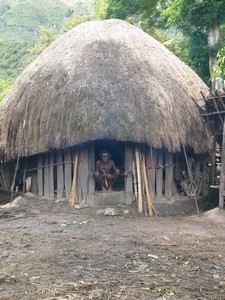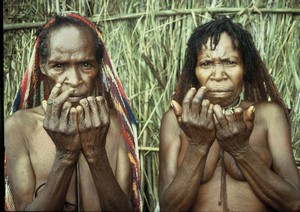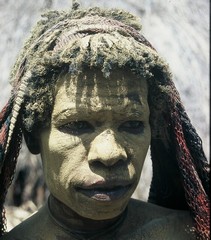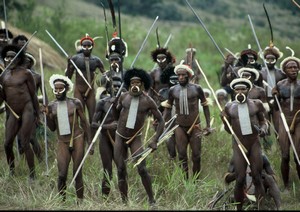 Photo©Luděk Uzel
Photo©Luděk Uzel Photo©Luděk Uzel
Photo©Luděk Uzel Photo©JahodaPetr.com (Papua Guide)
Photo©JahodaPetr.com (Papua Guide) Photo©Jitka Herwigová
Photo©Jitka Herwigová Photo©Luděk Uzel
Photo©Luděk Uzel Photo©Pavel Vácha
Photo©Pavel Vácha Photo©Josef Bojanovský
Photo©Josef Bojanovský Photo©Josef Bojanovský
Photo©Josef Bojanovský With us you can be in a face to face contact with Dani people… Photo©Pavel Vacha
With us you can be in a face to face contact with Dani people… Photo©Pavel Vacha Dani Warriors like white women… Photo©Pavel Vacha
Dani Warriors like white women… Photo©Pavel Vacha Dani women have their finger segments cut for deceased relatives … Photo©JahodaPetr.com (Papua guide)
Dani women have their finger segments cut for deceased relatives … Photo©JahodaPetr.com (Papua guide) Photo©JahodaPetr.com (Papua Guide)
Photo©JahodaPetr.com (Papua Guide) Photo©JahodaPetr.com (Papua Guide)
Photo©JahodaPetr.com (Papua Guide) Photo©Josef Bojanovský
Photo©Josef Bojanovský Mrs. Jitka peeling sweet potatos with Dani women in Baliem Valey Photo©Pavel Vacha
Mrs. Jitka peeling sweet potatos with Dani women in Baliem Valey Photo©Pavel Vacha If somebody dies, Dani women color their body with mud Photo©JahodaPetr.com (Papua Guide)
If somebody dies, Dani women color their body with mud Photo©JahodaPetr.com (Papua Guide) At 1966 during the Dani war, there was a minute in which 60 people died. After that wars are forbiden… Photo©JahodaPetr.com (Papua Guide)
At 1966 during the Dani war, there was a minute in which 60 people died. After that wars are forbiden… Photo©JahodaPetr.com (Papua Guide) Photo©Luděk Uzel
Photo©Luděk Uzel This Dani War was mock, but sometimes there are casualties… Photo©JahodaPetr.com (Papua Guide)
This Dani War was mock, but sometimes there are casualties… Photo©JahodaPetr.com (Papua Guide)Papua – Dani Tribe in Baliem Valley
Baliem Valley and the Dani tribe waited a long time to be discovered. Papuan highland belongs to one the most recently explored New Guinea areas. The tall mountains in west Papua (Irian Jaya) were generally considered as uninhabited. No sooner than 1398 did the pilot Richard Archbold notice that there was something special about the deep, and large valley situated among the four-thousand meter tall mountains. In the valley there were clearly recognizable fields, similar to those he knew from Europe. The Baliem valley and Dani tribe were discovered by pure luck.Baliem Valley – West Papua (Irian Jaya)
Baliem Valley, inhabited by the Dani tribe, is the most fertile part of the highland covering the west of the New Guinea Island – Papua (Irian Jaya). Baliem Valley lies about 1800 m above the sea level, and it is surrounded by a crest of mountians some of which reach up to 4500 m. There are even some fish in the Baliem River which flows through the valley. The area covered by the Baliem valley is not large, roughly 60×30 km.The first missionary, Loyd van Stone, parachuted there as late as 1954. Only then did the civilization of the Baliem valley, and Dani and Lani tribes, begin. Since then, the Baliem valley has become a gate for discovering the west of the Papua highland. No road has been built there yet, but in Wamana a large airport was built, and supplies are now transported by large freight airplanes. American Hercules planes brought vans and construction machinery. Thanks to this, a large network of asphalt roads could emerge, brick houses were built, etc. Despite all these developments, the Baliem valley is still dominated by the straw roofs of the Dani tribe.
Dani Tribe – West Papua Head-hunters
Danis are an indigenous tribe, which dwelled in the Baliem valley in the time of its discovery. Danis belong to some the “most decorative” tribes in the west Papua.
Their fondness for “dressing up” shows the most during the time of war. You have probably seen the famous photos of Dani tribe members with boar tusks in their noses, and headdresses made of Paradise birds feathers. Dani men only wear long and thin kotekas. The women Danis wear short skirts woven from orchid fibers, decorated with straw, and with indispensable woven bags called “noken” across their backs. Similar to the women of the Yali tribe, the Dani women wear short skirts below their butts.Despite the fact that Danis were discovered quite late – in 1938, they became one of the best known tribes in New Guinea. Dani occupied one of the most fertile parts of Papua. As a result they often had to fight for their territory. There were also frequent wars among the Danis themselves. They were the most dreaded head-hunting tribe on the island, which is even more remarkable if we consider that they did not eat their enemies, like the majority of other Papuan tribes did.
Dani build round or oval huts, and their villages are enclosed by fences. They are farmers, and their small fields are distinctly bordered. This is what helped Richard Archbold spot them from the plane. The Dani tribe’s customs and culture are very rich and interesting. Several pages could be written on these topics.
The main reason that the Dani tribe is so well known, is that the Baliem valley where they live, is relatively easy to reach these days. Wamena was a point of departure for many expeditions. The Dani villages are visited by virtually every tourist who sets out in west Papua. Some villages even show their original customs and hold mock wars.
Another thing which brought fame to the Dani tribe are the several hundred years old ”smoked” mummies of famous tribesmen. Two of them can be seen in the Baliem valley – in Akima and Jiwika villages.
Extracting salt by immersing banana stems in salt lakes is another relatively well known custom. The Dani tribe is also notorious for the following custom that if someone dies in the village, then each of his female relatives will have a segment of their finger cut off. The mutilated hands of women can still be seen in Dani villages, despite the fact that missionaries tried to purge them of this custom.
 Photo©JahodaPetr.com (Papua Guide)
Photo©JahodaPetr.com (Papua Guide)


Tidak ada komentar: